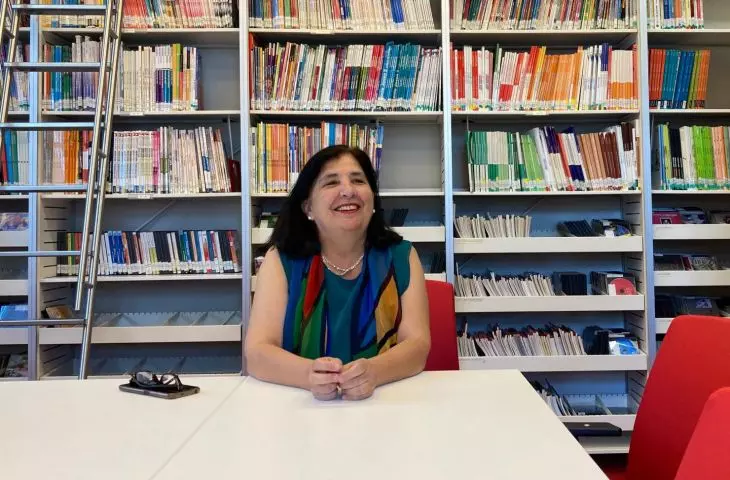Video interview with María Dolores Palacios Díaz
The Spanish expression "dar gato por liebre" (to give a cat instead of a hare) is close to the Polish proverb "Uncle replaced hatchet with stick", it means an unfavorable (for one of the parties) change, a deception in which we pretend that the stick/cat is similar and better than the hatchet/hare. María Dolores Palacios Díaz, an architect from the Madrid-based studio Soriano y Asociados, both in her design work and in a lecture delivered on June 18 at the Cervantes Institute in Krakow as part of the "Spanish Women's Architecture" series, reverses this phrase, proposing the hatchet instead of the stick.
This was the philosophy inculcate in her by her mentor, Spanish architect Alejandro de la Sota, who argued that the designer's job was to give something more than what the client expected. He wanted a stick? Let's give him a hatchet — it can be used as the stick we need, but it will also serve us in many other situations that he may not have even had time to think about yet. María Dolores Palacios Díaz talked about how to translate this thinking into architecture using concrete examples during her lecture "A hatchet instead of a stick, or maybe something else in architectural design".
Bilbao effect
Soriano y Asociados (S&Aa) studio in Madrid has been run jointly with Federico Soriano since 1992 — the reason for its creation was the winning architectural competition for the design of the Palacio Euskalduna in Bilbao. The duo of architects, then only thirty years old, by combining a congress and a music center in one edifice, reached back to the history of the place — on the post-industrial site of a former shipyard stood a ship-built edifice!
Euskalduna Palace in Bilbao (1994-1999), proj.: Soriano y Asociados
© illustrations courtesy of María Dolores Palacios Díaz
The building, located one kilometer from the Guggenheim Museum designed by Frank O. Gehry, was built in parallel to the city's famous icon, thus becoming part of the spectacular changes known as the still unsurpassed Bilbao effect. With a total area of more than 25,000 square meters, the Euskalduna Palace has two faces — urban and river — to match the scale of its surroundings. On the side of the Nervión River, we see a corten steel-clad block the size of a large ship (the building is 53 meters high!), while on the street side the facade is less monumental, decidedly urban, clad in gray tiles.
Euskalduna Palace in Bilbao (1994-1999), proj.: Soriano y Asociados
© illustrations courtesy of María Dolores Palacios Díaz
eco-friendly neighborhood
A hatchet instead of a stick was also given to residents of the Vallecas neighborhood in Madrid — architects from the Soriano y Asociados studio were commissioned through a competition to design six chimneys of an electric power plant for an emerging eco-district. The designers went beyond the functional aspect of the structure and, wanting to give the local community something more, arranged a public space between the tall chimneys, overlaid with a shade-giving structure.
Ecochimeneas in Vallecas, Madrid (2008-2010), proj.: Soriano y Asociados
© illustrations provided courtesy of María Dolores Palacios Díaz
We talk to María Dolores Palacios Díaz about architectural competitions in Spain, being part of the Bilbao effect and the situation of women in architecture:








































